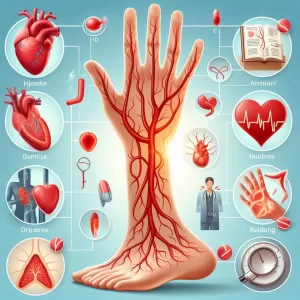What is Brain Aneurysm Treatment: Overview, Benefits, and Expected Results
Definition & Overview
An aneurysm is a medical condition that occurs due to a weakened blood vessel wall that leads to bulging or swelling. It causes bleeding in the brain or subarachnoid hemorrhage and bleeding that leads to the formation of blood clots, a condition called hematoma. A ruptured brain aneurysm often occurs in the area between the brain and the thin tissue covering it.
An aneurysm is a common occurrence. In fact, there are a lot of instances where an unruptured aneurysm is discovered even though no symptoms have occurred; these are mostly discovered through health screening tests or routine checkups. Most cases do not lead to a rupture and do not cause any problems to one’s health. Treatment for unruptured aneurysms, however, is necessary to eliminate the risks of it rupturing in the future.
Aneurysms can be surgically treated with an open craniotomy or a less invasive alternative called endovascular repair. During an open craniotomy, the scalp and skull are opened and the aneurysm is clipped. Endovascular repair, on the other hand, is minimally invasive and makes use of a special coil or mesh equipment and does not require making a large incision.
Who Should Undergo & Expected Results
The primary course of treatment for aneurysms in the brain is surgery. This is the case for both those that have already raptured and those that are yet to rupture. The only difference is that the former is considered a medical emergency as it is life-threatening. As such, a surgical procedure to treat the condition is scheduled immediately. In case of unruptured aneurysms, surgery is still an important treatment option but it can be scheduled at a later date. In some cases, the doctor may even recommend “watchful waiting” where the aneurysm is observed regularly, ensuring that the risk of it rupturing remains low. However, doctors can also recommend surgery for unruptured aneurysms depending on the patient’s risk factors. For instance, if the patient has a family history of the condition, watchful waiting is typically skipped and surgery is recommended to prevent the condition from causing life-threatening consequences. The same is the case if the aneurysm’s size is at least 7mm.
The following are the symptoms of an aneurysm, which indicates that the patient should undergo surgical treatment as soon as possible:
- Severe headache
- Nausea and vomiting
- Loss of consciousness
- Stiff neck
- Blurred or double vision
- Pain above or behind the eye
- Behavioral changes
- Difficulty walking
- Dizziness
- Sensitivity to light or photophobia
- Weakness
- Numbness
- Seizure
- Drooping eyelids
There are several factors that doctors should consider when assessing a patient’s case and when deciding the most appropriate course of treatment. These factors include:
Age of the patient – The older the patient, the higher are the risks of complications from developing during the surgery. These complications must not outweigh the benefits. Otherwise, the doctor will have to present other less invasive treatment options.
Size of the aneurysm – Surgical options are considered if the size of an aneurysm is between 3mm to 7mm.
Location of the aneurysm – The location of the aneurysm is also vital in deciding whether or not surgery is needed. It is more dangerous if it is located in a large blood vessel.
Other medical conditions of the patient – Surgical treatment for an aneurysm may not be recommended for patients with health conditions such as high blood pressure and autosomal dominant polycystic kidney disease as these can increase the risk of complications from developing and worsen the patient’s condition.
Neurological condition of the patient
The patient’s family medical history of aneurysm – As mentioned before, a family history of aneurysm increases the risk of rupture.
How Does the Procedure Work?
The actual process used in treating brain aneurysms depends on the specific type of treatment used.
Open craniotomy and surgical clipping. An open craniotomy is performed under general anaesthesia, which means that the patient is asleep the whole time. It involves making a cut on the patient’s scalp or in some cases, just above the eyebrow, to remove a small flap of bone so the neurosurgeon can easily locate the aneurysm. It is then clipped permanently and the bone flap is replaced before the incision is stitched back together.
Endovascular coiling. This surgical procedure involves the use of a thin tube called a catheter that is inserted into the body through an artery in the leg or groin. Using an imaging technology, the catheter is made to travel through the blood vessels until it reaches the aneurysm. The surgeon will then surround the aneurysm with tiny coils of platinum to effectively seal it and prevent blood from the main artery to enter, preventing it from rupturing. This is also performed under general anesthesia.
The decision of which treatment procedure to perform depends on the patient’s condition and risk factors. The physician must discuss treatment options carefully to come up with the best possible treatment plan for the patient. Both treatment procedures have their own advantages and disadvantages. Between the two, the endovascular coiling is typically preferred as it lessens the chances of needing additional procedures in the future. It is also less invasive and its recovery period is typically shorter.
Possible Risks and Complications
The surgical procedures in treating brain aneurysms come with several risks and possible complications. These are weigh against the benefits when deciding whether or not the patient will undergo the surgical treatment or choose other non-invasive methods.
Since anesthesia is involved, the patient will be exposed to the typical risks of anesthetics, such as problems in breathing as well as allergic reactions. Meanwhile, the brain surgery is associated with the following risks:
- Brain swelling
- Bleeding in the brain
- Blood clot
- Seizure
- Stroke
- Infection in the brain
After the surgery, it is normal for the patient to experience side effects that are expected to go away after a short period of time. These include:
- Speech and memory problems
- Muscle weakness
- Problems in balance
- Vision problems
Problems in other functions
References:Bederson JB, Connolly ES Jr., Batjer HH, et al. American Heart Association Guidelines for the management of aneurysmal subarachnoid hemorrhage: a statement for healthcare professionals from a special writing group of the Stroke Council, American Heart Association. Stroke. 2009;40:994-1025.
Bowles E. Cerebral aneurysm and aneurysmal subarachnoid haemorrhage. Nurs Stand. 2014;28:52-59.
Mack W, Dusick JR, Martin N, Gonzalez N. Principles of endovascular therapy. In: Daroff RB, Fenichel GM, Jankovic J, Mazziotta JC, eds. Bradley’s Neurology in Clinical Practice. 6th ed. Philadelphia, PA: Elsevier Saunders; 2012:chap 47.
/trp_language]
**What is a Brain Aneurysm?**
A brain aneurysm is a weakened area in an artery in the brain that bulges and fills with blood. Most brain aneurysms are small and do not cause any symptoms. However, if an aneurysm ruptures, it can lead to a hemorrhagic stroke, which can be fatal or cause serious disability.
**Brain Aneurysm Treatment**
The goal of brain aneurysm treatment is to prevent it from rupturing. There are two main types of brain aneurysm treatment:
* **Endovascular coiling:** This is a minimally invasive procedure that involves threading a catheter into the artery where the aneurysm is located and releasing tiny coils to fill the aneurysm and prevent blood flow.
* **Surgical clipping:** This is a more invasive procedure that involves opening the skull and placing a clip around the base of the aneurysm to block blood flow.
**Benefits of Brain Aneurysm Treatment**
The benefits of brain aneurysm treatment include:
* **Reduced risk of rupture:** Treatment can significantly reduce the risk of an aneurysm rupturing, which can lead to a hemorrhagic stroke.
* **Improved survival rates:** Treatment can improve the survival rates of patients who have had a hemorrhagic stroke.
* **Reduced disability:** Treatment can reduce the risk of disability in patients who have had a hemorrhagic stroke.
**Expected Results of Brain Aneurysm Treatment**
The expected results of brain aneurysm treatment depend on the size and location of the aneurysm, as well as the patient’s overall health. In general, most patients who undergo brain aneurysm treatment have good outcomes. However, some patients may experience complications, such as:
* **Stroke:** Aneurysm treatment can sometimes cause a stroke, which can lead to disability or death.
* **Hemorrhage:** Aneurysm treatment can also cause a hemorrhage, which is a type of bleeding in the brain.
* **Infection:** Aneurysm treatment can sometimes lead to an infection in the brain.
**Conclusion**
Brain aneurysm treatment is an important procedure that can reduce the risk of rupture and improve the survival rates of patients who have had a hemorrhagic stroke. However, it is important to be aware of the potential risks of treatment before making a decision.
2 Comments
Leave a Reply
Popular Articles








Brain Aneurysm Treatment: An Overview of its Benefits and Expected Results
Brain Aneurysm Treatment: Overview, Benefits, and Expected Outcomes